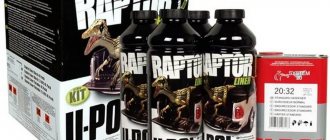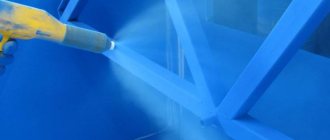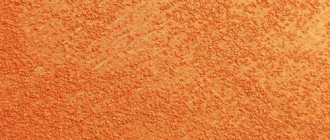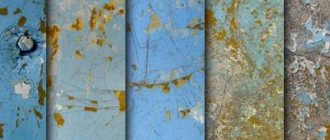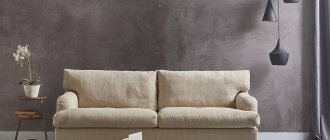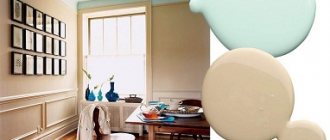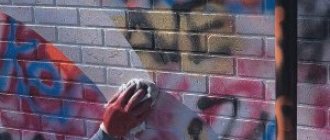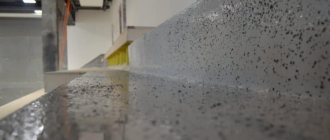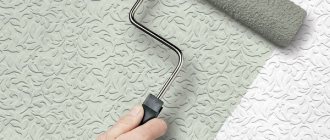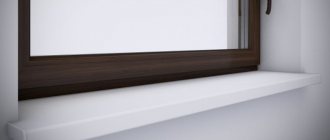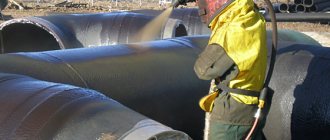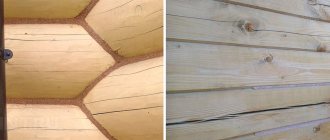We also meet the fence by clothing
Remember what you paid attention to first of all when choosing a new fence for your site? In most cases, it was the color and pattern of each individual element of the fence - Euro picket strips or Euro-blind slats.
It is the color of the finished fence that we notice before other characteristics. There are reasons for this. If we choose a fence in a sales area, then, as a rule, we focus on a sample of a separate plank. We cannot yet see the design of the section or the height of the fence. Only color. And partly the profile shape.
If we approach a finished fence somewhere on the street, then from afar we first pay attention to its color, partly to the shape of the sections, if it is somehow unusual and stands out from the straight horizontal row that has become familiar.
The first thing we pay attention to is the color of the fence
What is the color of the fence? This is just one of the characteristics of the external polymer coating applied to a galvanized steel base. By the way, the color of the coating, all other things being equal, has nothing to do with its durability - special chemical additives and additional protective layers are responsible for this.
Therefore, it is polymer coatings, their types and characteristics that should be considered the main argument when choosing a material for a new fence. And you should pay attention first of all to them, just as we pay attention first to the color of a fence, and only then to its shape and size.
Dyeing process
The preparatory stage consists of cleaning surfaces from rust, if any, degreasing, applying primers and drying. Next, polyester paint is applied to the part by spraying powder. The final stage is thermal exposure (from 140 to 220 °C), during which melting and polymerization of the coating occurs. A strong elastic protective film is formed on the surface.
When painting by hand, the powder is applied using a spray gun, after which the part is placed in a chamber where heat treatment occurs. When the process is fully automated, all stages are carried out directly in the chamber, on the walls of which nozzles are located, through which the composition enters the surface to be painted.
After polymerization of the coating, the product is dried; After the required time has passed, the finished part is removed.
Types and structure of coatings
We produce euroblinds both from galvanized steel without any coating and from coated steel. The first option belongs to the economy niche and we are not considering it here, although it is in some demand.
Products made of galvanized steel with coatings are much more known and in demand on the market. All coatings are based on polymers of various properties and compositions, which manufacturers do not fully disclose.
But for ordinary clients and developers, the chemical composition of a particular coating is probably not so important. Much more important are its consumer properties, the ability to withstand external atmospheric and mechanical influences, temperature changes, durability, color and texture.
Let's briefly talk about the coated steels from which the Metal Roofing Center produces its products every day: euroblinds, europickets, metal tiles, metal siding, etc.
Covering Polyester
Today it is the most common coating for galvanized steel sheet. Its popularity is explained by the successful combination of the basic properties of the material at an affordable price: beautiful appearance, resistance to UV radiation and other atmospheric influences, ductility, corrosion resistance. Products with this coating can be used in all climatic and geographical zones.
Polyester is one of the most popular coatings today
The main difference between Polyester is its wide range of colors.
Polyester coating is universal. It is used for the production of euroblinds, corrugated sheets, metal tiles, metal siding, europickets and other metal products.
A fence, facade or roof made of galvanized steel coated with Polyester has the following characteristics:
- Reliability and durability. Nominal metal thickness 0.45 – 0.50 millimeters
- Corrosion protection. The thickness of the zinc coating is at least 100 grams per square meter
Premium High Gloss Matt coating
This is a special textured coating with a thickness of 35 microns, which imitates the rough texture of coarse sand or shale. The large South Korean metallurgical company Dongbu Steel produces steel with this coating.
This coating looks very stylish and solid
High Gloss Matt coating available in four primary colors
A fence made of steel Euroblinds coated with High Gloss Matt has important advantages:
- Reliability and strength. Nominal metal thickness 0.5 millimeters
- Multi-level corrosion protection. The thickness of the zinc coating is at least 235 grams per square meter
- The ability to reflect infrared rays due to the presence of a special heat-reflecting substance in the composition. As a result, the product does not burn out or heat up, which prevents unwanted heating of the entire structure of the fence, roof or facade
Printech premium coating
This is a textured polymer coating with a pattern that realistically imitates natural materials: wood, stone, brickwork, etc. The method of screen offset printing is used in the manufacture of this coating. The large South Korean metallurgical company Dongbu Steel produces steel with this coating.
Printech coating is amazing for its ultra-realistic imitation of natural materials
You can choose to cover different types of wood or natural stone.
The main advantage of Printech coating is the variety of colors and patterns made by offset on a galvanized steel sheet. Ultra-realistic designs and colors give products with these coatings a unique look.
A fence made of metal Euroblinds coated with Printech has the following important advantages:
- Reliability and strength. Nominal metal thickness 0.5 millimeters
- Multi-level corrosion protection. The thickness of the zinc coating is at least 235 grams per square meter
- Increased durability and quality of coating due to the use of a multi-layer structure based on polyvinylidene fluoride (PVDF) in combination with a primer layer, a pattern and a transparent fixing layer
Powder painting Antique
Antique polymer powder coating is the most modern, ultra-strong, durable, beautiful and reliable type of coating for metal products, for example, European blinds or European picket fences. Products with this coating will serve you for decades!
Antique - the most durable modern coating
The Euro picket fence with this coating is great
When powder painting is done during baking in a heat chamber, a durable thick layer of coating is obtained, which performs not only a decorative, but also a protective function. It has important advantages:
- Reliable protection against corrosion, ultraviolet radiation, and humidity
- Excellent strength and resistance to scratches, shocks and other mechanical stress, temperature changes
In addition to the increased durability of the coating, which can withstand targeted negative impacts, it also looks great! The painting surface is non-uniform, which contributes to the appearance of reflections of natural light at different angles and beautiful visual effects in forging and bronze.
Premium coating Steel velvet
Fence-blinds made from Euroblind slats, which are made from rolled steel coated with Steel Velvet, have important and obvious advantages:
Steel from PJSC Severstal - a guarantee of the highest quality
The steel velvet finish looks great and feels good to the touch.
- Increased reliability and durability. Nominal metal thickness 0.5 millimeters
- Multi-layer corrosion protection. The thickness of the zinc coating is at least 180 grams per square meter
- Popular European colors and aesthetic appearance of the fence
- Compliance with standards and regulations of Europe and the Russian Federation
- The optimum ratio of price and quality
- Official guarantee from the steel manufacturer PJSC Severstal
- Service life up to 50 years
Everything you need to know about powder coatings
| Illustrations | Answers to frequently asked questions |
| What is powder coating ? This is a method of applying paint coating primarily to metal surfaces. Compared to traditional paints and varnishes, the use of powder paints provides excellent aesthetic and strength characteristics of the finished coating. | |
| What is this coloring method suitable for ? Powder paint is only relevant for technical painting. That is, you can cover the surface with a continuous layer of powder. If you need a decorative coating with color transitions, it is better to use liquid paints. | |
| How does coloring happen ? The essence of powder coating is as follows: the powder is applied to the surface, after which the surface is “baked” at certain temperatures in a sealed chamber. | |
| Why does the powder stick to the part and not fall off before entering the heat treatment chamber ? Remember the experiments in physics lessons when pieces of paper stuck to an electrified (rubbed) ebonite shelf? Everything is the same here - the surface to be painted becomes electrified and the particles stick to it. The electrification of the surface is maintained until the end of “baking” in the chamber, so the coating is relatively smooth. | |
| What are the advantages of applying powder to electrified surfaces ? The powder is applied in one even layer. It will stick only to an electrified surface, but not to an already laid layer of paintwork. Therefore, when using high-quality materials, you can paint, as in the photo, without sagging. |
| Illustrations | Types of powder paints according to curing method |
| Thermoset and thermoplastic . Such formulations are prepared using excipients, fillers, pigments, film-forming polymers or oligomers. Based on the method of polymerization, these coatings are divided into ultraviolet and thermal hardening materials. | |
| Thermosetting . These compounds are made on an epoxy base and form a paint coating due to chemical reactions when the surface is heated in a polymerization oven. | |
| Thermoplastic . These coatings are polymerized during heating and subsequent melting. There is no chemical reaction during polymerization. The finished coating is chemically resistant, and therefore is used as chemically inactive, electrical insulating and anti-corrosion. | |
Photochemical. These coatings form a film already at +100 °C. The applied layer is melted and after that the film hardens under the influence of UV rays.
|
| Illustrations | Composition of paints and their technical characteristics |
Polyester powder paint. Polyester-urethane paints and varnishes are based on a combination of polyisocyanates and hydroxyl-containing polyesters. LKM has the following properties:
Scope of application: protective coating of wear-prone automotive parts, external air conditioner units, metal furniture, etc. | |
| Polyacrylate coatings. The composition includes epoxy and acrylate resins, similar to the components in epoxy-polyester paints and varnishes. Polyacrylate paints, which contain glycidyl, have the following qualities:
| |
| Epoxy coatings. The powder is produced using epoxy resins, pigments and a group of fillers. Distinctive characteristics are high adhesion, impact resistance, heat resistance and dielectric properties. The price of this composition is the most affordable of all powder paints on the market. Scope of application: anti-corrosion and electrical protective coating of metal structures. | |
| Epoxy-polyester coatings . The composition includes components characteristic of polyester and epoxy paints and varnishes. Used for powder painting of metal furniture, heating radiators, water heaters, etc. |
| Illustrations | Coating texture after polymerization |
| Shagreen texture . Such coatings are relevant when painting metal doors, forged gates and fences, monuments and other metal structures. | |
| Hammer texture . Paints with this texture are used when decorating metal fences and metal doors. | |
| Matte texture . Matte coatings are used when painting car wheels, car bodies, metal furniture, etc. | |
| Glossy texture . Such coatings are in demand when painting chrome, gold and silver. |
Painting technology
| Illustrations | Methods of applying powder paints |
| Hand painting . The powder is applied with your own hands using a special gun. The advantage of the solution is that the painter can correct unpainted areas. The disadvantage is the human factor, since the painter may not notice the unpainted area of the surface. | |
| Automatic painting . The powder is applied through nozzles installed on the walls of the chamber. This method is relevant for industrial painting of massive parts. The technology of automatic powder painting is bad due to the high consumption of powder, which crumbles onto the floor of the chamber. |
Let's take a closer look at the example of coloring:
| Illustrations | Description of technological stages |
| Surface cleaning . Removal of old paint is carried out using sandblasting units, which, using abrasive particles, knock off all contaminants from the metal surface. | |
| Surface preparation after sandblasting . The surface, after sandblasting, is covered with dust. Therefore, the instructions provide for cleaning and degreasing the surface with phosphating solutions and other chemicals. | |
| Drying . Residues of degreasing solutions drain from the prepared surface and chemical residues evaporate. At this stage, the temperature in the drying chamber does not exceed +100 °C. | |
| Applying paint . Application is carried out in one layer, since the paint particles simply will not stick with the second layer. | |
Polymerization of the applied layer. Painted parts are placed in a chamber where they are exposed to heat for a certain time.
. | |
| Removing the part and checking the quality . After the set time has elapsed, the part is removed from the chamber. |
Coating options - pros and cons, recommendations
Let's consider three coating options. We will indicate their main disadvantages and advantages and give recommendations for choosing. The final decision, as always, remains yours.
Single sided coating
Until recently, and even today, one of the most popular was one-sided coating. The colored polymer is applied to only one side of the galvanized steel coil. The second side is coated with a light gray epoxy primer as standard.
The main big advantage of steel with one-sided coating is its low cost. This is the main reason for its popularity among developers. As they say, “cheap and cheerful.” After all, everyone wants to have a beautiful fence, even if it faces the street with its beautiful colored side.
Of course, as with everything, there are also disadvantages. There are two of them. First: despite its high resistance to weathering, the epoxy primer is washed out over time, and this spoils the appearance of the fence.
Single-sided coatings are cheap, but they have their drawbacks
Some people don’t even consider the second drawback to be such. How many people, so many opinions. Everything is subjective. But many people don’t like the fact that a fence with one-sided covering is only beautiful from the front side, from the street side. The owners either have to admire the dull, identical light gray soil, or spend time and money on additional coloring of the second side of the fence. By the way, almost always such painting is very short-lived; it has to be regularly updated, spending more and more money.
There are cases when owners deliberately choose a fence with one-sided covering. They sometimes need a light gray monochromatic surface to fulfill their design plans. According to them, green plants or landscape design elements look much more advantageous against its background.
The one-sided version includes Polyester, High Gloss Matt, Printech, and Steel Velvet coatings.
Double-sided coating
More reliable and at the same time more expensive double-sided polymer coating. In this option, a colored polymer is applied to both sides of galvanized steel coils.
As a result, for example, a fence-blind with double-sided coating looks equally attractive both from the street and from the yard. The service life of such a fence is determined not by the strength characteristics of the soil layer, but by the quality of the polymer coating. As a rule, double-sided coating lasts up to 50 years; it does not fade, crack, or peel.
Double-sided coating is beautiful and durable
The disadvantage of steel with double-sided coating is its relatively high cost. For this reason, many developers prefer one-sided coating, or even simply galvanized products - without coating at all.
Each owner decides for himself - guaranteed reliability, durability and high aesthetics or a fence with a gray primer layer. But in some cases, double-sided coating is really not worth even considering. For example, when ordering metal tiles for a new roof. Or when planning to cover the facade of a house with corrugated sheets or metal siding.
Some colors of the Polyester coating can be presented in a double-sided version
Euro picket fence with Printech coating in double-sided design is indistinguishable from natural wood
Polyester and Printech coatings are available in double-sided versions.
NEW – single-sided polyester enamel coating
The choice between products with one-sided or double-sided coatings confuses many people for a long time. I want it to be beautiful, durable, and cheaper. And even after having installed the fence, having admired it enough, the owner often continues to think: did he make a mistake, did he overpay, or did he choose?
Previously, you had to choose between single-sided and double-sided coatings. Today there is no such problem
Now the question of painful choice can be removed. Less than one year ago, we had the opportunity to offer customers an alternative option in every sense - a one-sided polymer coating with colored polyester primer on the reverse side from PJSC Severstal.
You get a beautiful double-sided fence for almost the price of a single-sided one
The finished product made from this steel looks great - almost the same as a product with double-sided coating. And this at a much lower cost.
The polyester enamel primer is almost the same in color from the polymer on the front side of the euro picket fence
The colored polyester primer is matched to the color of the polymer on the front side and only slightly differs from it in structure and shade, practically duplicating it. It is much more weather resistant than gray epoxy primer. It does not fade under the sun, does not wash out, does not crack, and retains its original appearance for many years.
Polyester primer retains its original appearance for many years
Polyester enamel color options
The working palette of the Metal Roofing Center is constantly updated with new colors and coatings. Less than a year ago, polyester enamel colors were added to our range. Today we offer them to customers in the following assortment:
The palette of polyester enamel is gradually expanding
Polyester enamel primer is beautiful, reliable and profitable
